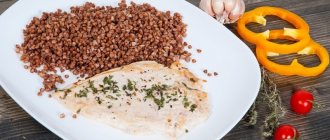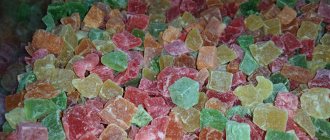Medical editor: Zemereva N.Yu., physiotherapist
Pyelonephritis is an inflammatory disease of the kidneys that affects the calyces and pelvis of the organs.
Pyelonephritis, like all inflammatory processes, can be acute with a sharp and significant increase in temperature, symptoms of intoxication and pain in the lumbar region, and chronic, when the disease periodically, especially if the diet is not followed, goes from the stage of remission to the stage of exacerbation.
Treatment table No. 7 for pyelonephritis in adults and children
The “Healing Table No. 7” diet was developed by Russian nutritionist Manuil Pevzner. The scientist was the first to note the therapeutic effect for pyelonephritis and other diseases, observing simple nutritional standards. The diet has a healing effect on the entire human system and organs.
General recommendations can restore salt balance and eliminate the development of swelling of the legs, which are most often considered to be the main symptoms of kidney disease. The “Healing Table No. 7” diet has several options.
Depending on the type of disease and the patient’s condition, he is prescribed one or another diet:
- diet No. 7 - for chronic type of pyelonephritis and glomerulonephritis;
- diet No. 7a - for acute nephritis in case of exacerbation;
- Diet No. 7b - for preventive measures after eliminating acute kidney diseases.
The purpose of introducing a therapeutic diet is to remove all nitrogenous products and reduce the main load on the kidneys. After carrying out comprehensive dietary measures, the patient notices an improvement in his general condition, while swelling is eliminated, blood circulation is restored and kidney function is normalized.
A diet for pyelonephritis in adults is prescribed after 30 days of treatment for the main symptoms of the disease. The patient must go through several days of fasting, during which he is allowed to drink only water (about 350 ml/day). Upon completion of the dietary course, the patient is most often prescribed treatment table 7a and 7b.
In addition to cleansing and anti-inflammatory properties, the Healing Table No. 7 diet also normalizes blood pressure and water balance.
In addition, the prescribed diet in some cases can remove hypoallergens from the body. Frequent use of the “Healing Table No. 7” diet is not recommended for healthy people, since such a diet is considered inferior and, under some circumstances, will only harm health.
For the purpose of prevention, a healthy person can use the diet no more than once a year, and the duration of the course should not exceed more than 2 weeks. Any dietary option should be discussed with a specialist. Self-medication may result in severe complications, which will only worsen the situation.
Diet rules
Diet in cases of pyelonephritis in adults plays a vital role in treatment. Any non-compliance with the diet can lead to a worsening of the disease and an increase in the duration of drug therapy. Proper nutrition for pyelonephritis is usually selected with the aim of establishing metabolic processes in the patient’s body and quickly removing toxic substances, nitrogenous compounds and salts. If the diet is prescribed correctly and the person adheres to it, the clinical effect will soon be noticeable.
The basic principles of dietary nutrition according to Pevzner, which is used in cases of therapeutic treatment of pyelonephritis, include the therapeutic “Table No. 7”. Its essence is to reduce daily salt intake to a minimum amount, reduce protein foods, and increase the proportion of vitamins consumed.
However, it is important to remember that a specialist must prescribe the diet in detail. For example, a complete refusal of salt can lead to salt-wasting kidney syndrome or kidney failure, so the doctor draws up a menu where the maximum daily salt intake for the patient does not exceed 10 grams. However, with profuse, incessant vomiting, high fever and severe sweating, doctors increase the salt rate for the patient to 15 grams.

A diet for renal pathologies for adults involves fortifying food. For patients with pyelonephritis, the amount of daily intake of vitamins A, group B and should be increased by one and a half times. The diet menu should include easily digestible foods that have undergone gentle heat treatment during preparation. With this diet, preference should be given to steam cooking with the addition of salt at the end of the cooking process. In addition to steamed food, you can eat boiled food; fried food is not recommended. Fatty foods are also not advisable for kidney disease. It is worth eating boiled food at least 5 times a day, however, if a high body temperature occurs, it is important to reschedule the main meal to the moment when the body’s thermoregulation is improving. That is, it is advisable to eat more at normal temperatures, and drink more at elevated temperatures.
The main goals of the diet for pyelonephritis are the following processes:
- creating optimal conditions for establishing renal functionality;
- resumption of the optimal metabolic process in all organs and systems of the body;
- lowering blood pressure;
- getting rid of fluid stagnation in the body and swelling;
- creating conditions for the complete removal of salts, toxins and nitrogenous compounds.
In cases of pyelonephritis in children, the diet for them is not fundamentally different from that described above. The child's nutritional characteristics may be his personal preference for certain foods. For example, if you do not want to drink a lot of water, it is important to offer your child to drink fruit drink, juice, or tea. The liquid should enter the sick body often, in small quantities. In the case of a child’s diet, it is advisable to provide his diet with 50% fermented milk products, eliminate cocoa and chocolate, salty foods (nuts, chips, crackers) and soda from the menu.
In the case of the occurrence of this disease in infants, it is important to take into account certain features when preparing their diet. The acute form of the disease must be accompanied by a water-tea diet, and breastfeeding must be strictly dosed. If an infant is bottle-fed, then in cases of pyelonephritis he should be fed fermented milk products. At the same time, it is strictly necessary to control the salt and protein content in products for feeding infants. To feed infants, it is necessary to choose products in which extractive substances will be completely absent.
Table of permitted products
To treat pyelonephritis, it is important to choose the right diet from foods that will contribute to the rapid treatment of the disease.

The table shows the main permitted products of “Healing Table No. 7”:
| Meat and fish | Allowed products include low-fat meats (beef, chicken, turkey and rabbit). Among the low-fat varieties of fish, it is worth noting cod, pike perch, perch and pike. |
| Eggs | Due to their content, eggs can be added to all dishes without worrying about possible harm to the body. |
| Bread and flour products | The diet includes any flour products without added spices and salt. |
| Dairy products | The diet should include dairy products such as cream, milk, cottage cheese. Cheese is prohibited. |
| Vegetables and fruits | The list of permitted foods includes almost all types of vegetables and fruits. Doctors list carrots, pumpkin, and potatoes as the most consumed foods. Recommended fruits include watermelon and melon, which have a cleansing effect on the kidneys. |
| Drinks and desserts | Drinks include weak black and green teas. Freshly squeezed juices, weak instant coffee, fruit drinks, compotes based on cranberries and dried fruits can also be consumed. Low-calorie and low-fat desserts are also allowed. |
| Cereals | Almost all types of cereals are allowed, especially buckwheat and oatmeal. Non-prohibited foods also include pasta. |
The diet for pyelonephritis in adults and children requires the presence in the menu of dishes containing groups of vitamins A, B and C, which have a positive effect on the overall functioning of the renal system.
Allowed foods should be included in the diet gradually, with the permission of the attending physician. A complete change of diet is possible only if acute symptoms of the disease occur.
Diet "Table No. 7"
If pyelonephritis occurs, experts recommend that the patient adhere to the therapeutic diet “Table No. 7”. This is a salt-free diet, in which protein can be consumed in quantities physiologically necessary for a person. This nutritional system provides for limiting salt intake to 2 grams per day and increasing the amount of vitamins B, C and consumed. The energy value for patients with pyelonephritis is considered to be 2700 kilocalories per day, while it is necessary to consume 70 grams of proteins, 90 grams of fats and 400 grams of carbohydrates.

“Table No. 7” is prescribed in cases of the onset of the recovery period for acute nephritis from the third week, for chronic pyelonephritis, hypertension, pyelonephritis in pregnant women and other similar conditions. Thus, it can be understood that this diet is indicated for patients with a non-acute stage of pyelonephritis. It must be followed in everyday life by those who suffer from a chronic disease outside of periods of exacerbation. There are quite a lot of products allowed in this menu, among them there are those that cannot be consumed in acute forms of the disease. This fact is explained by the fact that “Table No. 7” involves bringing the patient’s diet to a certain algorithm, which will be easy to adhere to. The gradual introduction of some prohibited foods will help the body adapt to the diet and not experience severe pain.
An approximate weekly diet menu “Table No. 7” for a week is as follows:
- Monday – cottage cheese, toast, tea and jam, vegetable soup, low-fat kefir, mashed potatoes, tomato and cucumber salad, compote;
- Tuesday - steamed omelette with greens, orange juice, buckwheat-based soup, low-fat meat cutlets, weak black tea, salad of any fruit and green tea;
- Wednesday – milk with a piece of chocolate, low-fat fish cutlets, mashed potatoes, berry jelly, vegetable salad, cottage cheese, tea with lemon;
- Thursday - cottage cheese, sour cream, unsweetened green tea, vegetable stew, tomato juice, vegetable salad, mashed potatoes, low-fat kefir;
- Friday – honey toast and weak creamy coffee, buckwheat, vegetable stew, low-fat kefir, banana, kiwi, orange juice;
- Saturday – yogurt with fruit, berry jelly, low-fat meat cutlets, mashed potatoes, orange juice, toast with jam, apple juice;
- Sunday - cottage cheese with sour cream, unsweetened tea, toast, salad of any type of fruit, low-fat kefir, vegetable salad, tomato juice.
List of prohibited products
The diet for pyelonephritis limits the consumption of foods that can have a negative effect on the urinary tract and kidney function in adults.
Foods and organic non-protein substances that lead to the accumulation of uric acid and also negatively affect the digestive organs should be excluded from the diet. The concentration of such substances in the body often leads to severe complications.
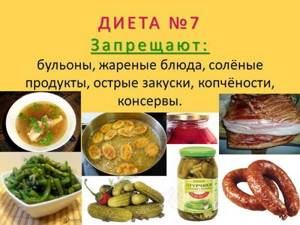
Main list of prohibited products:
- salt in any form and quantity;
- spices;
- mushrooms;
- strong tea and coffee drinks;
- alcoholic and low-alcohol drinks;
- pickles and smoked meats;
- butter;
- some types of vegetables: garlic, onion, radish;
- animal fats.
When building a healthy diet, it is also recommended to reduce the amount of animal protein consumed. Strong coffee, tea, as well as chocolate and various sweets are contraindicated for use in the treatment of kidney diseases. Complete avoidance of the listed products will help the patient recover from pyelonephritis as quickly and effectively as possible.
Reviews and results
This therapeutic food is somewhat tasteless, since all seasonings and sauces are excluded, and according to indications, the amount of salt is limited. In view of this, it is difficult for patients to adhere to it for a long time. However, after an exacerbation of the disease, a therapeutic diet must be followed for at least six months. If you try to expand your diet ahead of time, pain appears in the kidney area, dysuria returns and blood pressure rises.
• “... Previously, there were often relapses, but the last time I was treated in a hospital, and the doctor told me to drink various diuretic herbs and follow a diet for a whole year. This year there have been no exacerbations, so I follow all the doctor’s orders and try not to get hypothermic. The hardest thing is to follow a diet, but it is very important. If I allow myself a little alcohol and spicy foods during the holidays, I feel worse”; • “... Pyelonephritis occurred during pregnancy in the second half. She was treated in the department with antibiotics for 2 weeks, began drinking herbs at home and continued to diet. It so happened that in total I followed it for 1.3 months, especially since I was breastfeeding and did not allow myself anything extra. Since then there have been no exacerbations of the disease. Herbal decoctions, cranberries, lingonberries plus diet are very helpful for prevention”; • “... I suffer from a chronic form and have high blood pressure, but not much. I watch my diet very closely, especially avoiding salt and salty foods. The whole family eats the diet dishes - they just add salt and spices if necessary. I don’t have to cook separately and there are no problems with it. The doctor insists that I be on this diet all the time (there may be rare exceptions during the holidays). I feel good, I manage to keep my blood pressure normal without taking pills, and there is no swelling.”
Features of diet for acute and chronic forms of pyelonephritis
The diet for pyelonephritis in adults and children with an acute type of disease includes restrictions that help eliminate painful symptoms. General advice includes: drinking liquids from 2 l/day and reducing the amount of salt to 5-6 g/day.
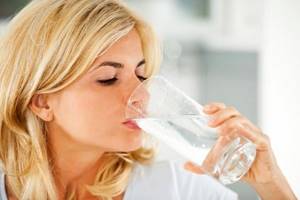
The diet for the chronic form of pyelonephritis is identical to the diet for the acute type of the disease. Similarly, you can eat fish, eggs, cereals and other permitted foods. The amount of salt should also be reduced.
Dietary diet for adult patients
In the first days of an exacerbation, it is recommended to eat only ripe fruits and melons. You can make purees and salads from them. After this, protein products are gradually introduced. Animal proteins should account for no more than 60%. As a rule, in the first days you have to stay in bed, so the calorie intake should not exceed 2100 units. If the peak has passed, then the fasting days end.
The main thing is a small amount of salt, it should not be more than 10-12 g. If vomiting, heavy urination or sweating is observed, then its amount is increased to 15 g.
There should be at least 2 liters of water throughout the day. Products can only be processed using gentle methods, that is, boiling, steaming or baking.
Peculiarities of nutrition in children
Although dietary recommendations for children are practically no different from usual ones, it should be remembered that a child’s body, unlike a mature adult, is not able to accept any type of food. Heavy foods often lead to digestive disorders, which should also be taken into account.
The “Healing Table No. 7” diet for children should consist exclusively of healthy and natural dishes that are easily digested by the child’s body.
For children with pyelonephritis, increased consumption of dairy products, including low-fat yogurt, cottage cheese and fermented baked milk, is recommended. Candies, chocolate and other sweets must be excluded without fail. The consumption of fast food, Coca-Cola and other carbonated drinks is also prohibited.
Diet during pregnancy
Pregnancy is often characterized by a more severe form of pyelonephritis - gestational pyelonephritis. Hormonal changes, as well as uterine pressure, cause disruption of the physiological tone of the urinary canals. Due to this, pressure occurs in the kidney area, which contributes to the development of inflammation, which is especially dangerous during pregnancy.
In such a situation, maintaining proper nutritional standards can improve the patient’s condition. Prohibited foods during pregnancy include fried, spicy and fatty foods. In this case, it is necessary to reduce the amount of salt consumed. Also, the amount of liquid should be increased to 2 liters. Taking fresh cranberry juice will be beneficial.

The diet for pyelonephritis in adults involves the use of cranberry juice.
Kidney diseases in pregnant women are especially dangerous for the health of mother and child. Based on this, at the first symptoms of the disease it is necessary to urgently visit your doctor.
General rules
Pyelonephritis is an inflammatory disease of the interstitial tissue and pyelocaliceal system of the kidney of infectious origin. The main cause of its occurrence is Escherichia coli Proteus vulgaris , Staphylococcus , Klebsiella , Enterococcus , Streptococcus . Penetration of infection is possible hematogenously (through the blood) and urogenously (from the urethra, bladder and ureters). An important role is played by inflammatory processes in the organs of the urinary system ( urethritis , cystitis ) and the genital system ( adnexitis , prostatitis ).
Of particular importance are predisposing factors that disrupt the normal passage of urine: stricture of the ureter, its atony, duplication of the ureters or pelvis, the presence of stones, prostate adenoma . Violation of urodynamics creates favorable conditions for the proliferation of microbes and their advancement to the pelvis, increasing the pressure of urine in it and the penetration of infection into the venous and arterial system of the kidneys, and then into the interstitial tissue. Sources of hematogenous infection are carious teeth, furunculosis , chronic tonsillitis , mastitis , panaritium , osteomyelitis , cholecystitis .
The disease can also be provoked by:
- hypothermia;
- incomplete emptying of the bladder when urinating, the need to restrain it;
- insufficient intimate hygiene during menstrual bleeding;
- presence of diabetes mellitus .
Symptoms and treatment of the disease
The acute stage is characterized by pain and a feeling of heaviness in the lumbar region, weakness, fever, severe intoxication (nausea, vomiting, loss of appetite). Treatment is carried out in a hospital, bed rest is prescribed, and antibacterial agents are used. Typically, antibiotics are prescribed based on the sensitivity of the isolated microorganism to antibiotics. The duration of treatment is two weeks.
An important aspect is proper nutrition of the patient. What diet is prescribed for this disease? Nutrition during this period should be gentle on the kidneys. Its main points are: elimination of irritation on the mucous membrane of the urinary tract and increased excretion of urine.
In order to enhance diuresis, it is recommended to drink 2 liters of liquid per day, consume foods and herbal decoctions that have a diuretic and anti-inflammatory effect (willow bark, knotweed, blueberry leaves, nettle, birch leaves and buds, licorice root, St. John's wort). The diet consists of easily digestible foods, and its calorie content is 3200 kcal per day. The first days limit protein and salt.
Diet for pyelonephritis in adults
Pyelonephritis in adults is characterized by a long course and a possible unfavorable outcome - it can cause chronic renal failure . In adults, due to inadequate or insufficient treatment, dietary violations, and alcohol intake, the disease more often takes a chronic course. In this regard, great attention must be paid to dietary nutrition.
The diet includes:
- Vegetables and fruits with a diuretic effect (watermelons, zucchini, cucumbers, pumpkin), decoctions of diuretic herbs (bear ears, knotweed, corn silk, diuretic collection).
- Fruit drinks and juices from lingonberries and cranberries, which have antiseptic and anti-inflammatory effects. protocyanidins have antimicrobial effects.
- During the first days of acute pyelonephritis and severe intoxication (fever, chills, general malaise), it is advisable to give up protein foods (meat and dairy products) and switch to a vegetarian diet - pureed vegetables and fruits, baked apples, fruit and vegetable juices.
- As the process subsides, lean meat (beef, chicken, veal) and fish are introduced. The amount of protein should be within the physiological norm.
- Milk, fermented milk products, cottage cheese, unsalted cheese.
- Whole grain bran and cereals.
- Calcium chloride water.
- Weak green tea without sugar.
- Olive oil.
What should you not eat if you have this disease?
- Spicy seasonings and sauces (horseradish, mustard, mayonnaise, ketchup).
- Products containing essential substances (parsley, celery, radish, garlic, onion, basil, radish).
- Concentrated broths rich in extractive substances - fish, mushroom and meat.
- Sour fruits and vegetables (tomatoes and tomato juice, lemon). The exception is cranberries.
- Salted, pickled, pickled vegetables.
- Sweet confectionery and sugar.
- Limit salt to 5-10 g, if there is an increase in blood pressure - to 2-3 g.
- In case of exacerbation, you need to give up animal fats (15 g of butter per day and vegetable fats are allowed).
- Products containing artificial colors and high content of oxalic acid (sorrel, spinach).
- Alcoholic drinks, sweet carbonated drinks, strong tea and coffee.
Pyelonephritis during pregnancy is quite common. Its occurrence is facilitated by dilation of the urinary tract, which occurs with hormonal changes and compression of the ureters by an enlarged uterus. The straight and wider urethra in women creates favorable conditions for infection from outside to enter the bladder. During pregnancy, the uterus compresses the ureters and the passage of urine is disrupted, emptying the bladder becomes difficult, which contributes to the proliferation of pathogenic flora and its spread upward.
Also, pregnant women experience atony of the ureters and dilation of the pelvis (their capacity increases up to 10 times, and the ureters lengthen and bend). All this creates conditions for the appearance of vesicoureteral reflux . Pregnant women with multiple pregnancies, large fetuses, and polyhydramnios need to do a bacteriological urine test once a month.
It is necessary to treat pyelonephritis, and hospitalization of the patient is also mandatory (even in the case of asymptomatic bacteriuria). Many are frightened by the fact that the doctor insists on using antibiotics, but the harm from them is less than the harm from complications of pyelonephritis, which is not treated.
A woman's diet should be balanced and include all the substances necessary for the normal development of the child.
- This means avoiding fatty, fried, spicy and salty foods, processed foods, pickled vegetables, strong coffee, mushrooms, seasonings, spices and spices, garlic, onions, and vinegar.
- Salt intake is reduced to 5-8 g per day, especially if blood pressure is high. This means that dishes are not salted during the cooking process, and salt in the permitted amount is added to ready-made dishes at the table.
- During the first days, raw and boiled vegetables, kefir, yogurt, low-fat cottage cheese and dishes made from it are recommended.
- After a few days, lean meat and fish, chicken breasts are introduced.
- It is mandatory to adhere to the drinking regime, unless drinking a large amount of liquid is contraindicated - up to 2.5 liters of liquid per day. Bearberry decoction, kidney tea, lingonberry leaf decoction and cranberry juice, known for their anti-inflammatory and diuretic properties, have a healing effect. However, herbal medicine does not replace the use of antibiotics, but is carried out in parallel or after a course of antibiotics.
- It is important to monitor bowel function as constipation maintains inflammation in the kidneys. In this regard, you need to eat laxative foods (beets, prunes, figs, fresh rhubarb and compote made from it).
- After suffering from an illness, you should refrain from spicy seasonings, salty and smoked foods for a year.
Diet for chronic kidney pyelonephritis
Chronic pyelonephritis occurs in waves with relapses, periodically exacerbating when exposed to unfavorable factors (hypothermia or colds). During the period of exacerbation, a clinical picture of acute pyelonephritis is noted. At this time, you may experience pain in the lower back, a feeling of discomfort and heaviness in it that occurs when walking or standing for a long time. Some patients complain of frequent urination (more at night) and increased blood pressure , fatigue and weakness (more in the morning), headaches , mild swelling of the face and hands (in the morning), and feet - by the end of the day.
The latent course of the chronic form of the disease is characterized by isolated urinary syndrome. During remission, high blood pressure may be the only symptom. Of course, patients must constantly monitor their diet.
- You will have to significantly limit or permanently abandon spicy foods, seasonings and spices.
- Limit smoked meat and fish products and fried foods in your diet, at least during periods of exacerbation.
- Since there is a tendency to increase blood pressure, it is necessary to reduce the amount of salt consumed to 3 g, and also avoid salted and pickled vegetables, canned food, salted fish, meat and meat products.
- Limit vegetables that have an irritating effect: onions, garlic, radishes, sorrel, horseradish, parsley, radish, or consume them according to how you feel and note which vegetables cause aggravation.
- Give preference to natural foods, mainly boiled, stewed or baked.
- Exclude products with dyes and preservatives, frozen semi-finished products with preservatives.
- Regularly consume fruit juices, compotes and fruit drinks.
- If there is no swelling, follow the drinking regime (1-1.5 liters of liquid).
- The consumption of sodium (salty) mineral waters is not allowed.
- Avoid constipation . To do this, eat vegetables with coarse fiber, cereals, bran and whole grain bread.
- Conduct preventive courses of taking decoctions of diuretic herbs.
- Limit or eliminate alcohol intake.
It is important to prevent hypothermia, strengthen the immune system and not break the diet. It is adjusted if salts (oxalates or phosphates) are detected in repeated urine tests and, accordingly, the pH of the urine changes. When it is acidified (pH 4.6-5.8), Diet No. 6 , and when alkalized, Diet No. 14 is .
uric acid salts (urate) is associated with a decrease in urine pH. Urates are formed due to excessive intake of purine from fish, meat and poultry. The most effective treatment in this case is to prescribe a diet, as for gout . It is envisaged to exclude liver, meat broths, kidneys from the diet, and limit meat, fish, poultry and fats. If oxalates appear in the urine, it is recommended to reduce the consumption of fats and foods high in oxalic acid: sorrel, spinach, carrots, beets, beans, potatoes, rhubarb, tomatoes, parsley, red grapes, strawberries, oranges, grapefruit, leafy greens, cranberry juice, cocoa, green beans, blackberries, figs, gooseberries, raspberry juice, tea. You should include in your diet foods rich in magnesium (wholemeal bread, cereals), which binds oxalates in the intestines and reduces their absorption.
The precipitation of practically insoluble calcium phosphate is observed when the equilibrium shifts to the alkaline side. Alkalinization is caused by milk and dairy products, legumes, potatoes, sweet berries and fruits, many vegetables (except green peas, pumpkins, mushrooms), as well as fruit and vegetable juices. Therefore, the above products should be excluded and preference should be given to meat, fish, eggs, cereals, sour berries (red currants, lingonberries), and honey. In these conditions, on the contrary, meat and fish broths are allowed, and drinks include tea, coffee, and rosehip decoction.
Drinking regime
Water balance plays an important role in inflammatory processes, especially during exacerbation of symptoms. The liquid has a beneficial effect on the entire body, activating kidney function and flushing out dangerous microelements.
Regardless of the degree of the disease, patients with pyelonephritis are prescribed plenty of fluids. The incoming fluid is limited only due to swelling or medical contraindications.
The following liquids will be especially helpful:
- Mineral water without sodium.
- Decoctions of dried fruits and rose hips.
- Weak teas with milk or lemon.

Decoctions of corn silk also have an antibacterial effect. Drinks that include lingonberries and cranberries contain high levels of benzoic acid, which helps eliminate the development of inflammatory micronutrients.
Menu for a week for pyelonephritis
Diet for pyelonephritis in adults and children plays no less important role than drug therapy. A well-constructed menu can have a therapeutic effect and help the mastering of medications.
An approximate menu for the week is presented in the table:
| Breakfast | Lunch | Dinner | Dinner | |
| Monday | Cottage cheese with low-fat sour cream, weak green tea | Baked apple | Vegetable soup, potato casserole, fruit drink | Semolina porridge, vegetable salad, milk |
| Tuesday | Boiled buckwheat, bread with butter, weak green tea | Dried fruit decoction, curd pudding | Rice soup, cranberry compote | Steamed fish, mashed potatoes, weak tea |
| Wednesday | Egg, cucumber and tomato salad, weak tea | Low-fat kefir | Vegetarian green borscht, baked fish | Semolina porridge and cranberry juice |
| Thursday | Steamed omelette, weak tea | Fresh juice | Fish soup, compote | Boiled potatoes, skim milk |
| Friday | Oatmeal, cottage cheese, rosehip decoction | Jaboko, dried fruit | Buckwheat soup without meat, compote | Pilaf with dried fruits, carrot cakes, tea |
| Saturday | Corn porridge, tea, diet sandwiches | Red currant decoction | Rabbit stew, mashed potatoes | Cottage cheese casserole, low-fat kefir |
| Resurrection | Barley porridge, weak tea, egg | Baked fruits | Pasta with sour cream sauce, kefir | Fruit puree, weak tea |

The calorie content of the daily diet should be about 3000 kcal/day. Dietary standards are similar to the general advice of “Therapeutic Table No. 7”, meals are divided, about 5-7 times a day. Meals are separated by snacks, including permitted fresh fruits or vegetables.
Recipes for preparing recommended first and second courses
In order not to go wrong during therapeutic nutrition, ready-made meals should be not only healthy, but also tasty. There are quite a large number of dishes that can be consumed when sick. Experts also recommend diluting your diet daily with all the permitted products from the table.
Vegetable omelette in the oven
Ingredients:
- eggs - 3 pcs.;
- skim milk - 1 glass;
- tomatoes - 2 pcs.;
- other vegetables as desired;
- butter - 20 g.
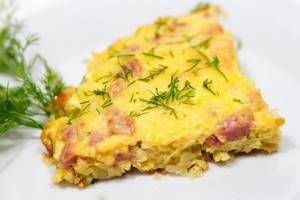
Method of preparation: if necessary, cook the vegetables until half cooked. Preheat the oven to 180°C. In a deep bowl, beat the eggs and mix with milk. If desired, add cooked vegetables to the mixture. Place in the oven for 10 minutes. When finished, garnish the dish with tomatoes and bake for another 2 minutes.
Potato salad
Ingredients:
- potatoes - 500 g;
- hard-boiled eggs - 2 pcs.;
- low-fat sour cream - 125 g;
- parsley.
Method of preparation: boil potatoes in their skins, peel and cut into circles. Empty the egg yolks and grind finely, add sour cream. Season the resulting mixture with vinegar, sugar and herbs. Pour over potatoes. Let the dish sit for 20 minutes in the refrigerator.
Carrot soup
Ingredients:
- carrots - 2 pcs.;
- milk - 2/4 cup;
- water - 2 glasses;
- rice - 2 tbsp. l.;
- sugar - 2 tbsp. l.;
- butter - 2 tsp.
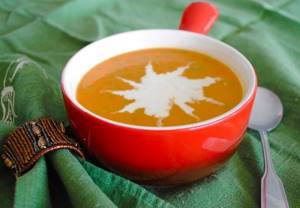
Method of preparation: finely chop the carrots, simmer in butter and sugar. Add rice with a small amount of liquid. Cook for 15-20 minutes. Dilute with milk to desired thickness. Put 1 teaspoon of butter into the finished dish.
Lifestyle with pyelonephritis
A healthy lifestyle has a beneficial therapeutic effect not only on pyelonephritis, but also on many other pathologies. Regular exercise helps to naturally strengthen the immune system. When playing sports, blood flow to all internal organs is stimulated, including the renal system.
This has a significant impact on the elimination of negative metabolic products and accelerates the cellular regenerative ability of recovery. During the period of exacerbation of symptoms, exercise and any sports activities are contraindicated. In addition to physical activity, it is important to spend most of your free time in the fresh air.

Bad habits should also be eliminated, especially the consumption of alcohol and tobacco products.
Smoking can weaken the immune system and impair blood circulation inside the vessels, which negatively affects cellular metabolism. Particular attention should be paid to visiting saunas and baths in case of acute kidney inflammation. Taking baths, as well as regular bathing, is contraindicated for a disease characterized by elevated temperature.
Lifestyle for disease prevention is relatively simple and feasible for every person. Minor measures can relieve symptoms and pain for the patient.
What happens if you don't follow a diet?
If you do not follow the diet prescribed by the doctor, the patient risks developing complications such as inflammation of the tissues surrounding the kidney, bakeriotoxic shock, sepsis (occurs if the patient maliciously violates the regimen), paranephritis, purulent pyelonephritis, that is, an abscess or carbuncle.
Only proper nutrition can strengthen the immune system, which will allow problems with pathogenic microflora to be solved as quickly as possible.
Forecast and prevention of relapses
The most important measure to eliminate complications of relapses in pyelonephritis is the timely elimination of possible causes of the disease. To prevent the acute type of the disease, antibacterial therapy is used for 2-3 months. The most commonly used antibiotics are sulfonamides and nitrofurans.
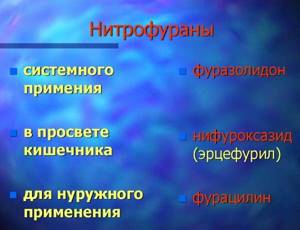
Only the attending physician can determine the correct treatment.
Regular examination by a doctor is mandatory to prevent pyelonephritis. Comprehensive monitoring should occur at least once every 2-3 months.
The examination includes:
- general analysis of urine and blood;
- biochemistry;
- Ultrasound of the kidneys.
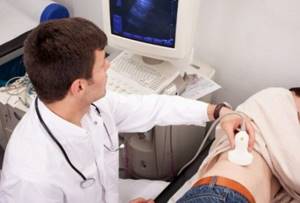
Also, for preventive measures and elimination of relapses, the patient should avoid hypothermia. In the acute form of the disease, sports are also prohibited. Patients who have had an acute type of disease and have normal uric acid levels and no relapses should visit a doctor weekly for at least six months.
If negative signs are present and an increase in inflammatory processes is observed, observation of the patient is extended to 2 years. The prognosis of any type of disease is most often favorable and does not cause any problems to the patient. With a late start of therapeutic measures, the risk of developing renal failure increases by 2-3 times.
Prevention of relapses of pyelonephritis in adults and children is characterized by taking the necessary medications and a diet prescribed by a specialist.
Article design: Oleg Lozinsky









